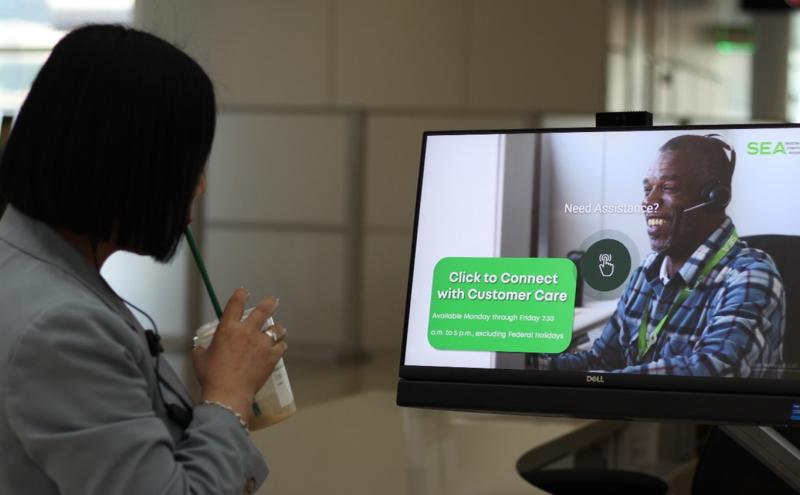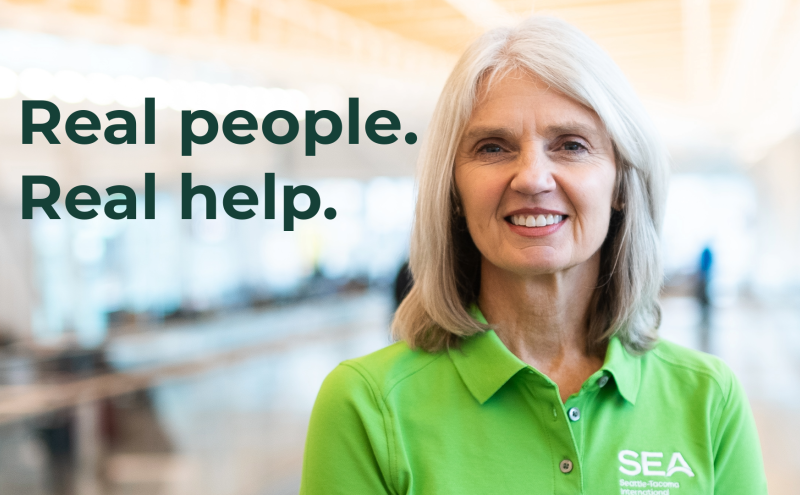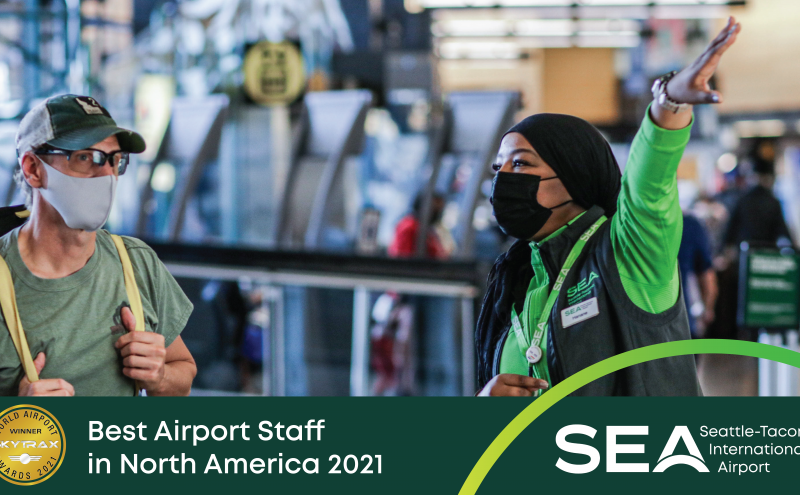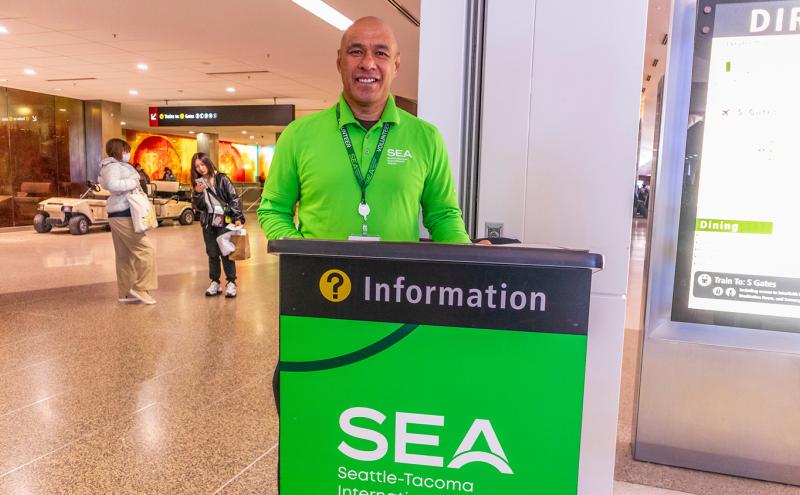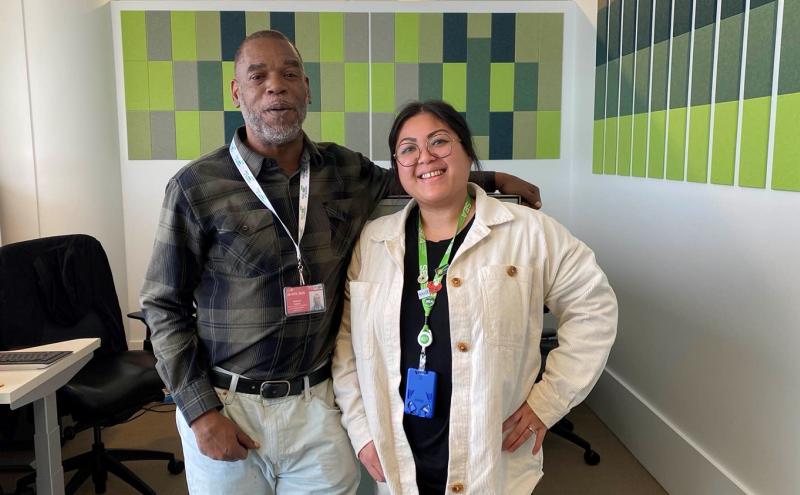
You’ve done everything you can to make your trip to the airport as smooth as possible. but what do you do when the unexpected happens: a lost iPad, a missing ID, or your arriving passenger is not where they should be? Don't worry — help is just a click, chat, phone, or video call away. The Customer Care team at Seattle-Tacoma International Airport (SEA) is here to help. They are real people with real advice, information, and directions to help you.
The Customer Care team includes two full-time and two part-time staff available to take your calls Monday through Friday 7:30 a.m. to 5:00 p.m. Here's how to chat with the Customer Care team:
1. Call the customer service phone number at (206) 787-5388
2. Use one of the Customer Care Connect touch screens. At the information desks and near Baggage Claim 15. You can audio or video call in more than 60 languages
3. Access Customer Care Connect on your phone by scanning QR codes on signs in the airport where you can call or text chat in more than 60 languages
Here’s how the Customer Care team can help you:
1. Provide personal service
We take your questions and complaints seriously. Our team works hard to keep you informed, solve problems, and provide relevant and accurate information in a friendly way to get you what you need.
2. Spend as much time as you need
When you call in, your calls won’t be timed. We are here for you as long as it takes to get what you need.
3. Get you the information you're looking for
If we don't know the answer, we will find it for you and give you other resources at airlines, baggage, and airport service providers.
4. Serve as airport experts
Team members are trained on every aspect of the airport like: general airport information; wayfinding; TSA and Customs and Border Protection regulations; airport services, amenities, and programs; and airport construction projects. They know the airport terminal and have insider knowledge to answer your questions.
Meet the call center team
Who are these superstars making your travel experience low-stress and more predictable? Meet two of the friendly folks answering your phone calls on the Customer Care team:
Danan Hoskins
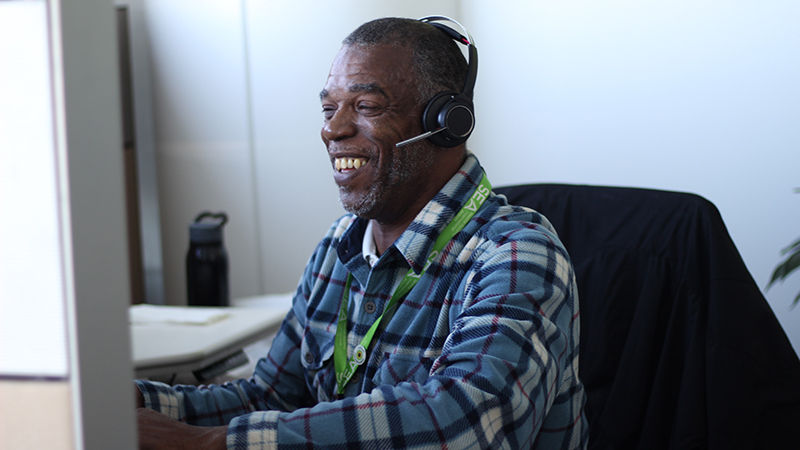
Q: What is your background?
A: I have 30 years of combined experience in customer service and customer-facing roles, particularly in hospitality and travel industry jobs. I was working at Holland America Line (HAL) as a security guard when I saw a job announcement to work on its customer care team. It was everything I wanted to do, and I went on to work there for nearly 10 years. Later, when I got a job working for Alaska Airlines, the traveler in me took off. After COVID I worked at Seattle Children’s Hospital, a courthouse, and a COVID testing site in customer-facing or call center roles.
I’ve been in this role at the Port of Seattle since November 2023; I’d been trying to get a job at the Port for over five years. With this job, I found an opportunity that matched my skills. I have a desire to help people and it’s a blast that I get paid to do this. I love being the person people call on to help.
Q: What do you love about your job?
A: I’ve loved the friends and relationships I’ve made since I started working here. I love and appreciate the environment and my team. I love being there to help people and being responsive to people’s concerns. I speak from the heart and relate to people’s experiences as travelers.
Q: How would you describe your style when helping customers?
A: My style is to always give people more than what they expect; they receive a five-star experience every time they talk to me. I show people a level of courtesy that’s uncommon and leave people better than before they called. I believe my team is the team to get us to our five-star goal for customer-centered travel. My team is the equivalent of a front door valet service, and my style is to give a five-star experience every time.
Q: How do you approach a difficult call?
A: When someone is upset, I just listen to their story. There is no amount of advice or direction you can give if people don’t feel you’ve heard them out. Some people call the airport to talk to someone, to hear a live human voice. There is value in being patient and listening.
Q: What are the most common types of calls you get?
A: Often, I hear from people who are at the airport and can’t find their ID, or they want to call their airline’s ticket counter or gate. Some people have complaints about traffic on the airport drives at night with reduced staff for traffic control. I think about, what is the most fun way to explain the process, show empathy, and provide customer service. I want people to feel justified to call and ask questions and share their concerns.
Q: What are some examples of unique calls you have received?
- Someone took their cat into an airport bathroom, and the cat got out of the cage and ran into a hole in the wall. I worked with the Airport Communications Center (ACC) and the maintenance team to get the cat out of the wall
- Someone driving an 18-wheeler was approaching the airport from I-5 to pick up a 2000-ton magnet from the airfield. They weren’t able to reach their contact person, so they called us to find out where to go
Q: What’s a typical day on the job like for you?
A: I start by going through my emails and studying any local, national, or global airport news that may impact travelers. I confirm that I have the correct resources and contacts to make calls go smoother and easily get the information I’m looking for. Then I make myself available to respond to calls. Some days are crazier than others. I take anywhere from 10 to 25 calls a day.
Manuela Taitano
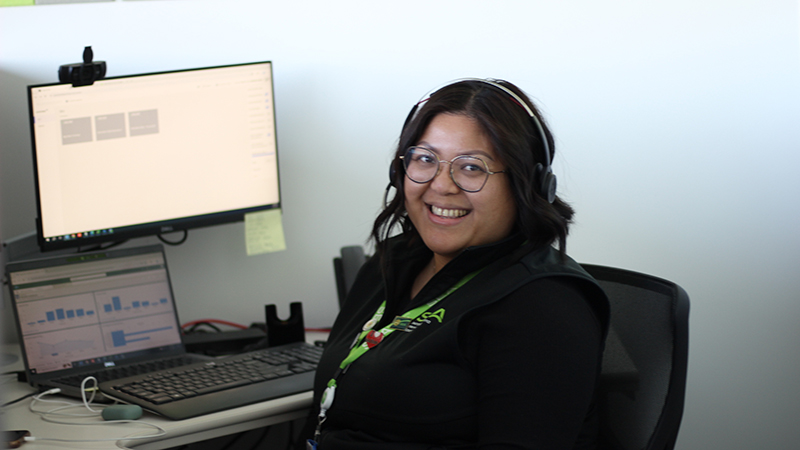
Q: What is your background?
A: I have worked in other call centers in the medical field doing appointment intakes and most recently tech support for medical software, doing a lot of screen sharing and video chats. I came across this job at SEA by chance. I wasn’t really looking for a job; I was very comfortable in my last position. I happened to be on the Port’s website and discovered that the airport had a call center. I put in my application and interviewed, and everything went well. I came in with no airport experience, but I’ve had a lot of support getting up to speed. I love working with the public, travelers, and people all over the world.
Q: What is your approach to customer service?
A: I am like them (the customers calling in). They are like me. They are just looking for help. You have to put yourself in their shoes. A lot of people get anxious just being at an airport; we make sure we are providing all the information to make travel as smooth as possible. If customers do call with questions for the airlines I try to answer them and say, "Generally speaking this is how it works, but it’s highly recommended that you contact airlines for concrete answers." We provide phone numbers for the airlines and are able to transfer their calls. I always go off their energy. If they are smiling on the phone, I am smiling with them on the phone too. I follow their emotions. They give me the feeling or vibe.
Q: What are some of the most common calls you get?
A: A lot of what I do is educating the public on what an airport is and how things work. The majority of calls are from people wanting to rebook flights or who have airline questions. The airlines handle those operations, but I get them to the resources they need. Less commonly we’ll receive calls from government officials on special accommodations for a delegate who is flying in.
Q: What is an example of a unique call you’ve received?
A: An employee at an airport in Canada called to see if a traveler flying through SEA could get a sunflower lanyard when they land. Sunflower lanyards are a way for people with non-visible disabilities to communicate that they may need extra help while traveling. We used all our resources to find the traveler and give them a sunflower lanyard. It was a special case of two airports partnering together to give awesome customer support!
Q: How do you respond to a difficult call?
A: I say sorry in a million different ways. I always apologize on behalf of the airport, and I always offer different resolutions — option A or option B. If the airport can resolve this for you this is what you need to do. I let people vent and talk. I tell them I understand their frustration. I put myself in their shoes.
Q: What’s a typical day on the job like for you?
A: We turn on our laptops and wait for calls. Sometimes video, chat, and voice calls come in at the same time, but we work through it. My team and I stay positive, encouraging each other and coaching each other. With only one other person working in the call center at the same time we discuss all our calls and make it a learning experience. When you call the call center and leave a message, you’re always going to get a callback. I always check my voicemails and call everyone back no matter what. I let them know we got the feedback and appreciate they took the time to let us know.

